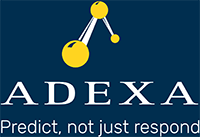Tiger Woods, Demand Planning and Machine Learning
Traditional demand planning techniques rely on past data in order to forecast the future. They can also use event data that occurred at a certain point in the past in order to project the impact of that event happening again in the future. However, they do not take into account what is relevant data and what is not when historical training data becomes invalid. Fairly recent historical data would have made Tiger Woods a likely winner for this year, and of course short-term data makes Brooks Koepka the likely champion for US open. An event that makes Tiger Woods an unlikely candidate was his unfortunate car accident. We, as human beings take this data into account and know how to interpret its implications, systems need to have the data to begin with and then be able to interpret this data to know that he cannot possibly be a candidate this year.
Last year, we all experienced an unprecedented pandemic that disrupted global supply chains, changed consumer behavior and invalidated the use of many periods of past data for predicting the future patterns. This event also invalidated the traditional techniques of demand planning and forecasting since they depend on past data to predict the future. The algorithms lack intelligence to know what is relevant in terms of length of time, causal factors and discontinuity. Factors that contribute to such discontinuity are attributes of data. Attributes of a golfer could be their health, their performance at a particular course or tournament, how they perform in rain or windy condition amongst others. With inclusion of attributes the relevance of data can be determined. Use of Neural Nets (NN), can identify the outcome since the system can be trained to show the system the relevance of such attributes in predicting the future.
Same strategy can be used to identify the best policies to be used for a product in order to forecast the demand. A demand planning policy is designed by selecting a forecasting algorithm, number of past periods, level of aggregation and so on. Using NNs, the system can identify the types of policies that are best predictors based on the attributes of the product. Furthermore, using this approach, the system can create new policies, by mutation of the existing ones, which would perform better than the old ones. The use of ML enables the traditional forecasting techniques to become smarter and take into account a new data dimensionality in order to make more accurate predictions




